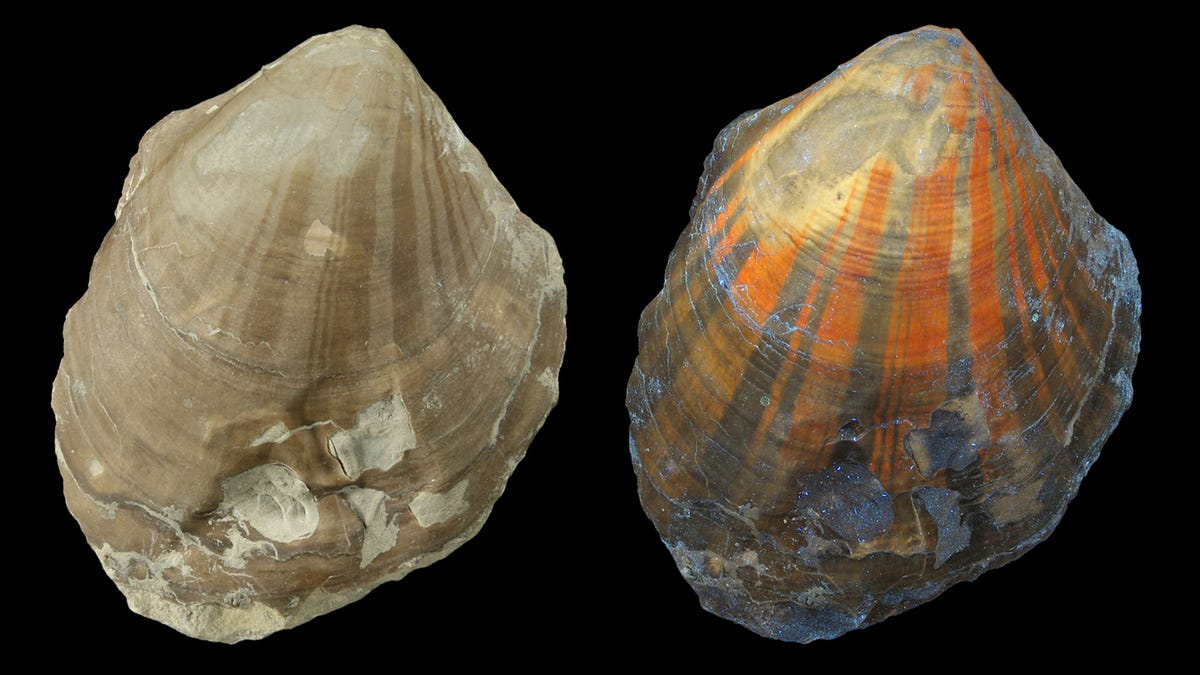UV Light Reveals Surprising Seashell Secrets From 240 Million Years Ago
Ancient shells get a gorgeous glow-up and show off their fancy patterns.
In modern times, ultraviolet lights are used to illuminate Grateful Dead posters, sanitize spaces and teach us more about animals (did you know wombats glow under UV?). UV light is now revealing some very ancient secrets by highlighting hidden patterns and colors in seashell fossils.
Paleontologist Klaus Wolkenstein of the University of Göttingen in Germany turned UV light on shells dating back 240 million years to the Mesozoic Era. The results are beautiful as the beige and gray fossil scallops glow in shades of orange, yellow and red. Wolkenstein published the study in the journal Palaeontology last week.
These scallop shell fossils glowed in different colors when put under UV light.
"UV light, which is invisible to the human eye, excites organic compounds in the fossils, causing them to glow," the University of Göttingen said in a statement. "This reveals a surprising variety of color patterns: different variations of stripes, zigzags and flame patterns."
Modern scallops don't fluoresce under UV light. According to Wolkenstein, the compounds in the fossil shells that glow under UV light were formed during the fossilization process. The colors that appeared differ depending on the region the fossils came from.
Researchers have used UV light to examine more recent fossilized mollusks, but Wolkenstein's work shows the technique can apply to much more ancient specimens. The university called the subjects of Wolkenstein's study "the oldest fluorescent color patterns found so far."
The glowing shells help these relics of the past come alive, highlighting the diversity and beauty of marine animals from our planet's past.


